Telecom providers: Trouble making money off 5G? 15 minutes could...

We just spend more money and don't make more money. 5G is letting us down
In general, Telecom providers face a big challenge in owning and operating a network service. With the rollout of a new network service, telecom providers can try to recoup the investment from the early adopters. However, at some point in time, the service becomes insanely popular and is adopted by the majority, hence the volume of data on the network skyrockets. Now, the network may not have been optimized for such a rapid influx of data and the cost to support the majority adopters may rise significantly. On the other hand, the revenue gets eroded because of competition from alternate telecom providers. Furthermore, connectivity becomes commodity as IT services firms and OTT (over-the-top) providers offer value added services and make money at the expense of telecom providers, thus widening the profitability gap.
5G rollout likely won’t be any different. Managing these costs calls for agility, however network operations are hamstrung by complexity. So, telecom providers need to embark on a stepwise journey to reduce costs and as well create sustainable new service revenue models.
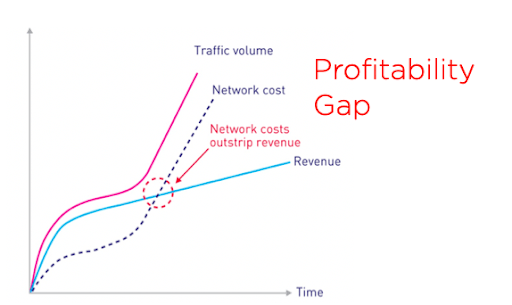
Step-1: Modernize the Telecom Provider Edge
First, telecom providers need to modernize their architecture and increase the efficiency of their network operations. The focus here is on the telecom provider edge, where various network functions – Firewall, Load Balancer, IoT Gateway – are typically hosted on disparate hardware from multiple vendors with altogether different management planes.
Leveraging Virtual Networks Functions (VNF) technology, those assets could be virtualized and consolidated yielding immediate benefits. These efforts would result in fewer hardware systems to procure, manage and maintain, which simplifies operations and reduces overall costs. Moreover, there is significant benefit to efficient network operations as those virtualized network assets can be managed centrally with simplified lifecycle management workflows, be it for infrastructure apps or any other mission critical apps.

All of this can be built on top of the Nutanix Edge platform. The Nutanix HCI (Hyper-converged Infrastructure) consolidates server and storage services into a simple, software-defined stack and allows you to scale on your terms while providing a giant pool of compute and storage resources, similar to cloud consumption economics. The built-in AHV hypervisor comes at no extra cost, removing expensive virtualization lock-in concerns. Security is always top of mind when discussing modern platforms. Nutanix Flow provides application-centric microsegmentation to secure east-west traffic. which is very important once you are running a chain of network functions.
Moreover, Nutanix Xi Edge offers Kubernetes/CaaS (Container-as-a-Service), which allows telecom providers to easily evolve from VNFs to CNFs (Cloud-Native Networks Function), promoting a future-proof architecture.
Step-2: Monetize by transforming as Digital Services Provider
Once the modernization kicks in, then comes the opportunity to make money off it. For years, telecom providers have been investing in tech to improve speeds and customer experience, but they haven’t been able to monetize their investments. The successful telecom of the future won’t simply provide connectivity, it will offer personalized end-user digital services. And this is a revenue growth area.
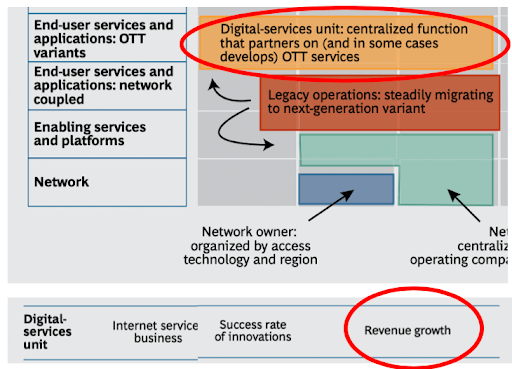
[Source: Boston Consulting Group report]
It’s great timing with respect to the advent of 5G technology, growth of IoT devices, and the rise of Computer Vision and AI algorithms, which are all catalysts to digital transformation. The sharp growth of online services and IoT devices generate massive amounts of data. 5G connectivity accelerates the data transfer and allows the processes to scale even further.
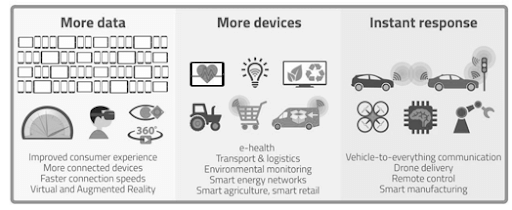
[Image credit: ofcom.org]
However, the classic computing model is cloud-based, whereby all the raw data from the sensors traverse multiple network hops and go to the public cloud for both real-time inference and long-term processing. For end-users, both consumers and enterprise, deriving value from this massive amount of data is rife with latency issues, lack of scalability, compliance and privacy issues arising out of processing it all in the cloud. Moreover, telecom provider’s role is limited as just being the connectivity provider and the actual money is made by the public cloud providers.
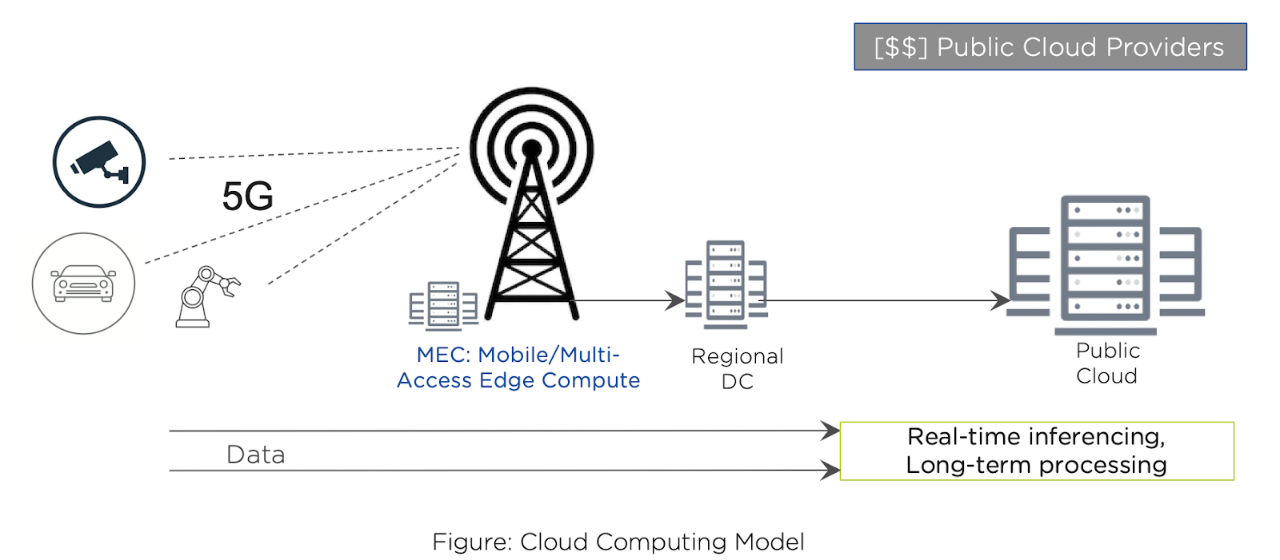
So, a new approach - Edge computing - is needed to process data closer to where it is produced and generate meaningful insights in real-time. The optimum place for such processing is Mobile Edge Computing (MEC), which provides an IT service environment at the edge of a telecom provider network. MEC is characterized by low latency and high bandwidth, so hosting applications there means better quality of experience (QoE).
One provider already demonstrated cutting latency in half through edge computing. Note that while the active data set is processed locally at MEC, the cloud still has a role to play by aggregating the feed from multiple edges and batch processing it.
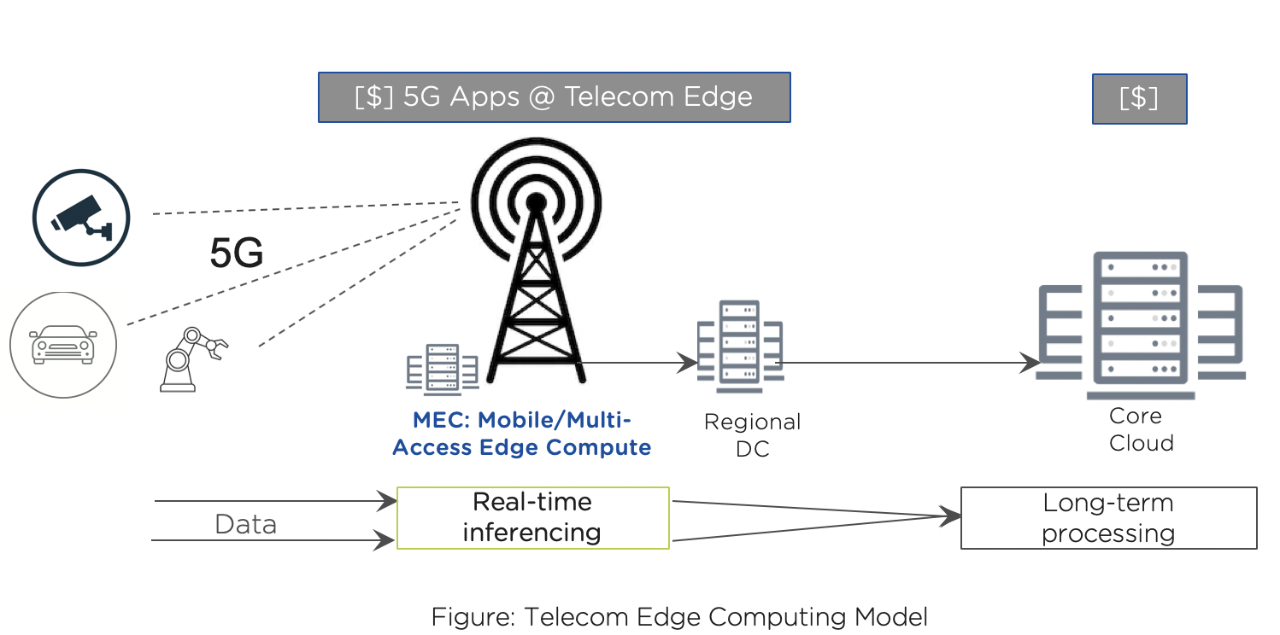
Moreover, telecom providers are in a unique position to provide real-time insight into radio network information and interleave it with location awareness. So, a great opportunity for telecom providers to intersect the data and offer value-added services through developing and offering new apps. These services will create new revenue streams and enable telecom providers to monetize the 5G rollout very effectively!
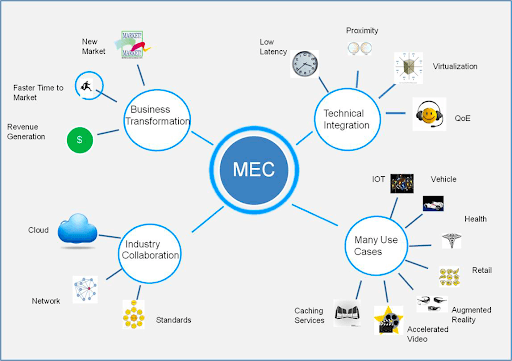
Image Credit: ETSI.org
Considerations for the Edge Stack
However, operationalizing machine learning and analytics at distributed edge scale is a difficult and complex problem. And it’s not necessarily just an AI problem, but the intersection of AI and Systems problem. In our opinion, there were two fundamental issues preventing widespread adoption of edge computing:
- Distributed infrastructure burden: First - it's hard enough to manage a single data center for an operator, and now hundreds of these micro data centers at the edge have to be managed and each of these is going to be mission-critical.
- IoT and AI operationalization at industrial scale: Second - the core personality of 5G | IoT | AI applications are going to be very different requiring rich runtime and data services - cloud-native support, continuous integration and continuous delivery (CI/CD) etc. for the developers, so the question becomes - what is the operating stack that can support these modern data science applications? The developer agility is the key.
Enabling simplified, secure, scalable management with Nutanix Xi Edge PaaS
Nutanix Xi Edge offers PaaS (Platform as a Service) - rich suite of services (serverless/FaaS [function as a service], Kubernetes/CaaS [Container as as service], Data Pipelines, AI, Kafka etc.) all integrated into a single platform, so that telecom providers can now consolidate traditional apps as well as enable the creation of data science based apps built with cloud-native technologies. Note that Xi Edge can run as VM on a virtualized substrate or as a BM on a specialized (low-power, compact, ruggedized...) hardware.
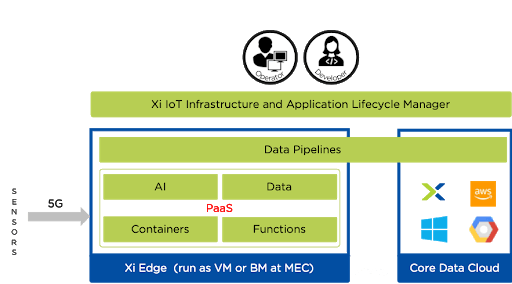
Infrastructure Management Simplicity
Xi Edge’s SaaS-based Infrastructure and Application Lifecycle Manager provides management simplicity for planet scale operations of hundreds to thousands of edge sites. Because the Xi Edge platform provides zero-touch setup and management of edge devices, telecom providers can help reduce the risk of IoT security breaches due to human error, increase overall efficiency and reduce the cost of operating edge devices across the globe.
With built-in connectors like MQTT, RTSP, GigE Vision, etc. and certificates support, the platform provides secure access to IoT data sources. The data variety problem is addressed by consolidating all the sources into an open data bus for app processing, thus significantly reducing infrastructure silos.
Xi Edge platform enables secure multi-tenancy through user isolated Projects. This is very important as MEC environments will support multiple customers. The Projects construct allows infrastructure administrators to configure and allocate resources for use by multiple development teams on shared infrastructure. Leveraging publicly available Xi Edge APIs, the telecom providers can easily segregate per end-customer billing and metering.
CaaS: Kubernetes Apps without the Kubernetes complexity
Xi Edge platform provides support for onboarding Kubernetes Apps at the right abstraction for developers, so that they can provision, run, manage and monitor k8s Apps as pods of containers without worrying about underlying k8s orchestration, patching, scaling etc.Developers can just input the Kubernetes formatted YAML, which will securely pull the images from any Container Registry. This workflow can be easily integrated with their custom CI/CD implementation.
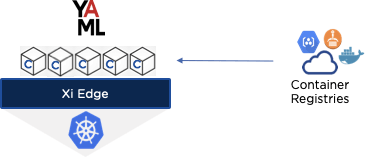
Even better, the benefits don’t end at day one. Xi Edge simplifies ongoing management and operations of deployed apps through features like real-time monitoring remotely, logging, and alerting. As an example, with a few clicks (or API calls), a user can monitor an app’s deployment status (including all containers within), across an entire global network of edges. If software or hardware diagnostics are needed at a particular service domain or edge where an app is misbehaving, a log bundle can be easily generated. If a user is actively testing and debugging, or just needs to take a quick peek at a transient error in production, real-time logs from within any application containers can also be easily viewed. And this is all available from Xi IoT infrastructure and lifecycle management without the need to login directly to the system where the apps are running. Messages stream securely over an encrypted channel and are viewable only by authenticated clients (such as an existing user logged on to the Xi Platform).
Serverless: Low-Code, Extensible Edge Platform
For some use cases, containers packaging and uploading to external registries may still require a bit of workflow, so developers can now easily tap into the Serverless/FaaS (Functions-as-a-Service) construct with Xi Edge.
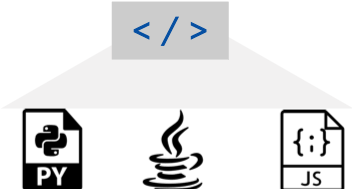
Leveraging Functions (written in Python | Node.js | Golang etc.), developers can focus just on the business logic without worrying about the underlying stitching. This can truly accelerate the development cycle as well as deployment over low bandwidth link.
Think of functions as LEGO building blocks, whereby developers can apply multiple, cascaded functions to process, transform the incoming data and send it across the cloud, thus creating a Xi Edge Data Pipeline. Note that while the active data set is processed locally at MEC, the cloud still has a role to play by aggregating the feed from multiple edges and batch processing it.
The platform offers a choice of clouds, and allows seamless data mobility between the edge and the cloud, so that developers can send the metadata to the actual service end-point within the cloud (e.g. AWS S3, GCP Cloudstore, or Azure Blob etc.) without writing a single line of code.
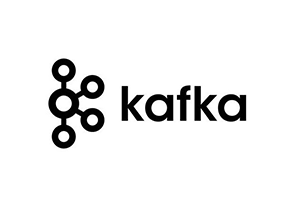
And not just any public clouds but private clouds are possible as well, as required per policy or regulation in certain geos. One can also store the data locally within the edge, say in Kafka or leverage real-time streaming service.

Xi Edge platform will have some pre-built runtime environments with ML frameworks. At the same time, the platform is extensible, so developers can easily package a custom runtime, say for Java, in a container and import it into Xi Edge Runtime inventory to start writing Java functions.
AI Inferencing Service
For advanced Computer Vision and AI use cases, Xi Edge offers AI inference service. You can either bring your own ML model, leverage one of our partners or we can build one for you. Either way, the model doesn’t need to be necessarily packed within the Container or the Function itself. And this is important because models may need to be updated very frequently for retraining purposes while the core of the application remains the same. This decoupling enables agility in model updates as well as pushing over low-bandwidth links. Model versioning and inventory management is provided by Xi Edge.

Moreover, the processing of the model and compiling it for the right hardware is handled automatically by the system, thus decoupling the development (in the framework of choice by the developer) from deployment (on the HW of choice by the operator). This abstraction from HW leveraging “infer” API allows the AI apps to be developed once and deployed many times on various substrates.

We understand that deploying apps and operating edge cloud is a journey and our commitment to you is that we will hold your hand at every stage of this journey. Moreover, beyond monetization at the Edge, there is an opportunity to harmonize operations through different parts of the network, which could be Step-3.
Step-3: Standardize with Nutanix Xi Edge Hybrid Cloud PaaS
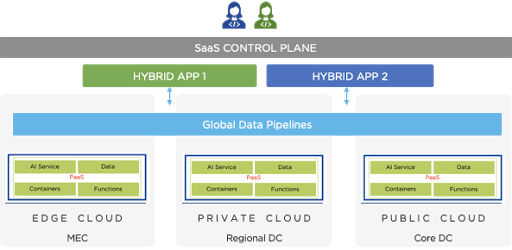
Edge Computing is an important part of our broader hybrid cloud vision and telecom providers have an opportunity to standardize with Xi Edge PaaS across different parts of their network. Use cases for regional and other DCs may not necessarily be IoT specific, however the homogeneity of operations and richness of services will be very important for telecom provider agility and efficiency across the network. The global data pipelines will allow for data mobility and hybrid apps, which can be moved across any substrate leveraging a common SaaS infrastructure and lifecycle management plane..
Example use cases
Smart Manufacturing blueprint for condition monitoring, predictive maintenance of machines and visual inspection of products:
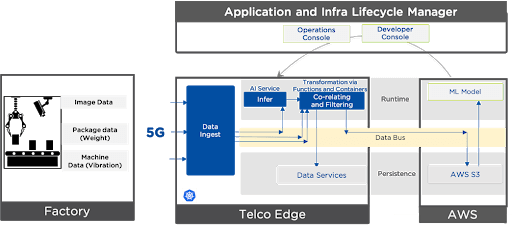
Retail solution for loyalty member detection, product choice analysis and theft prevention. Note that the shared telecom edge provides economic advantages for the end-retailers without requiring to host it on-prem.

Get started now through a ready-to-deploy cloud environment
Nutanix Xi Edge also offers a hosted cloud environment. This allows data scientists or developers to easily get started without having to wait for the Edge Hardware to be provisioned. There are some pre-built apps, some from our partners, in the Xi IoT Library. And because we know it's difficult to prototype edge data in the cloud, we’ve also enabled built-in YouTube 8M video data sources and even built Xi IoT Sensor app for iOS and Android based phones that turn cameras into instant video feeds. We’ve also made viewing test output simple by providing simple to leverage, native, HTTP Live Streams functionality. This makes prototyping and testing new ML models a breeze. Then when you’re ready, simply swap the sample input for a production RTSP or GigE-vision stream and deploy to your edge.
In a nutshell, Nutanix Edge solutions will help telecom providers to embark on a journey to modernize the edge infrastructure, monetize while also standardizing their operations across the networks. Money making opportunities will come quickly as the built-in capabilities will shorten the time to launch new revenue generating applications! But don’t just take our word for it, go ahead and take a test drive right now at nutanix.com/karbon.
© 2020 Nutanix, Inc. All rights reserved. Nutanix, the Nutanix logo and all Nutanix product, service and feature names mentioned herein are registered trademarks or trademarks of Nutanix, Inc. in the United States and other countries. All other brand names mentioned herein are for identification purposes only and may be the trademarks of their respective holder(s). This post may contain links to external websites that are not part of Nutanix.com. Nutanix does not control these sites, and disclaims all responsibility for the content or accuracy of any external site. Our decision to link to an external site should not be considered an endorsement of any content on such sites.